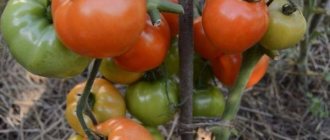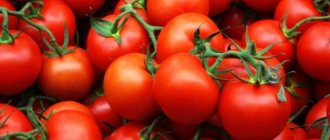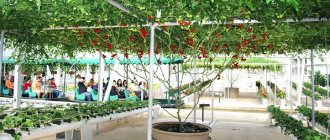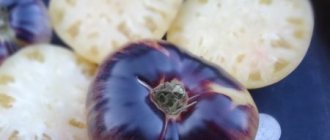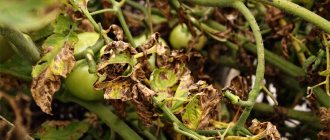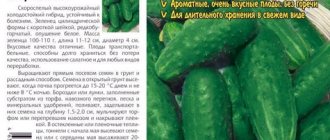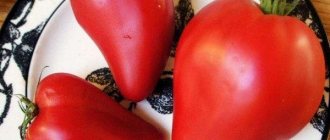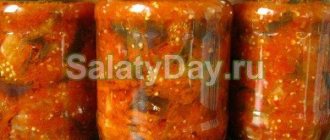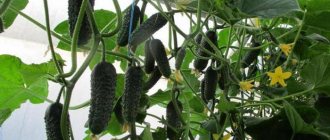Why do this work?
Stepsoning means removing unnecessary shoots (stepchildren) emerging from the axils of tomato leaves.
Removing a side shoot manually
Productivity depends more on the availability of light and nutrients than on the number of flowers and stems.
The appearance of the ovary and its maturation occur with good lighting and air exchange. If you do not cut off the useless shoots, the minerals will go to the growth of green mass, and the tomatoes will be tasteless and small.
What is stepsoning
Stepchildren are lateral layers on the main stem of a plant, appearing in each leaf axil. These shoots take away many useful microelements from the tomato, which are necessary for growth and development. When the intensive growth of stepchildren begins, the flower clusters located above the layerings experience a severe deficiency of nutrients and stop developing.
If you do not properly form the bush and remove layering, the bushes begin to branch very quickly, forming a dense jungle that will not bear much fruit. And those that do form will be small and underdeveloped. To prevent this from happening, stepsons begin to be removed at a very early stage of their development.
The most correct thing would be to wait until the layer reaches 5 cm in length and only then cut it off with a sharp blade. If you remove a larger stepchild, there is a chance that the main bush will become diseased and the yield will be reduced.
Tomato is a plant that loves ventilated areas and lots of sunlight. If excess shoots are not removed in time, the bushes grow, the plantings become dense and the quality of ventilation becomes very low. This results in dampness, in which fungal infections quickly spread, and the most terrible enemy of tomatoes is late blight.
How to choose the time?
Formation begins as soon as the seedlings adapt after planting in the ground. The shoots are removed in the morning of a clear day, when the greenery is lush and no rain is expected. Excess branches break off easily, wounds heal quickly. Then the sections are processed, sprinkled with ash or crushed coal.
Inspect the plants weekly, immediately eliminating emerging shoots before they turn into thick stems. In this case, cutting them off injures the mother bush. It may weaken and yields will decrease.
This work is carried out throughout the summer until autumn. Then the fruits will be large and the harvest will be high.
Basic principles of tomato formation
The process of forming tomatoes may include a certain list of manipulations that must be carried out correctly. So, we will try to describe in detail some of the fundamental principles of the formation of tomato bushes.
Stepsoning
Tomato pinching is the procedure for removing side shoots that form in the leaf axils. Such shoots consume quite a lot of micronutrients for their full development, which is often unreasonable. That is why experienced farmers, when the first stepchildren appear, try to remove them. Remove the side shoot by pinching it off with your fingers or cutting it off with scissors. In this case, it is necessary to leave a small piece of shoot (stump) so that in the future a new stepson does not form in this place.
It is recommended to plant determinate tomatoes in the morning, since during this period the plant is maximally saturated with moisture. In this case, the damage on the trunk will dry out throughout the day, and the contact of all kinds of viruses and fungi on their surface will no longer pose a significant threat to the health of the plant.
In order to prevent diseases that are especially common in greenhouse conditions, some plant protection measures must be observed during pinching. All farmer's tools and gloves must be regularly treated with a disinfectant solution of potassium permanganate.
Tomato planting is carried out regularly, starting from the moment the bushes adapt to new conditions after planting in the ground until the end of the growing season. Recommended frequency of the activity: once every 10 days. Regular pinching will direct the flow of micronutrients from the root of the plant directly to its fruits, speed up the ripening process of vegetables and reduce the density of plantings in the greenhouse, thereby improving air circulation and preventing the development of diseases.
Topping
The pinching procedure is carried out during the formation of tomatoes into one stem according to the above proposed schemes. For other determinate varieties of tomatoes, pinching is carried out at the end of the growing season on the eve of autumn.
It is also recommended to pinch the top of the bush in the early morning. When carrying out the manipulation, you need to remove the brush on the main or side shoot so that 1-2 leaves free from the ovaries remain higher up the trunk. They will allow moisture and nutrients to properly circulate through the stems, supplying energy to all the vegetative organs of the plant.
The formation of determinate type tomatoes may involve not only pinching the tops of the stems, but also pinching the inflorescences. When growing semi-determinate and determinate tomatoes, it is rational to remove the first flowering clusters that form, since they require a lot of energy and “slow down” the process of formation of new ovaries.
Removing leaves
Leaves, like stepsons, require a certain amount of nutrients for their development. To save plant resources, gardeners remove the lower leaves on the main trunk and the remaining stepsons, since they do not perform an important function. Leaves should be removed by cutting or pinching. Manipulation must be carried out especially carefully so as not to damage the skin of the plant. The lower leaves of tomatoes should be removed simultaneously with pinching. You can remove from 1 to 3 sheets at a time.
Garter
Gartering bushes is an integral part of the procedure for forming tomatoes. Determinate type tomatoes in a greenhouse can be tied to a trellis or with twine to the frame of a building. You cannot make tight knots on trunks. It is preferable to wrap the thread around the trunk of the tomatoes without fixing it tightly.
Difference between a side shoot and a peduncle
IMPORTANT . You need to know the difference between a stepson and a peduncle. The first grows from the axil between the leaf blade, the main trunk. The beginning of useful formations occurs on the trunk.
Even the smallest stepsons have leaves. There are only flower buds on the fruit bearing.
Stepson of tomato
Rules and technology
The main thing in pinching is not to harm the plant. To do this, before performing it, you need to find out 3 main points: when you need to remove the stepsons of tomatoes, how to pick them correctly and how many times such an event needs to be carried out.
Related article:
How to plant tomato seedlings correctly
Dates
The first removal of stepchildren from tomatoes is carried out on seedlings before planting them in open ground. In this case, you need to pinch out small axillary shoots about 1 cm long, which is a very labor-intensive process, but it allows the transplanted plants to grow faster and also simplifies their further care.
It should be taken into account that even when performing pre-planting pinching, after planting the seedlings in the soil, fresh axillary shoots grow very quickly on it. Therefore, it is necessary to systematically monitor and promptly pick off the stepsons on tomatoes, since they need to be removed before reaching 5 cm in length. To do this, it is recommended to inspect the beds at least once a week.
Related article:
How to feed tomato seedlings on the windowsill?
Secondary pinching with simultaneous pinching (pinching the top) is performed in the second half of summer to stop the growth of the main stems. In greenhouses, this agrotechnical measure must be carried out even after the start of harvesting.
How to determine stepson
If you watch how to remove shoots on tomatoes in the video, you will notice that only certain shoots are pinched. When performing pinching, you need to be able to distinguish a barren branch from a fruitful stem. To do this, you should know the main differences:
- the extra shoot of the tomato grows from the axil of the leaf, and the desired shoot extends from the main stem;
- the axillary process has only leaves, and the fruit stalk has flower ovaries;
- The differences become most noticeable when the stepson grows to 5 cm.
Related article:
Growing tomato seedlings at home
If axillary shoots are not pinched in time, they thicken to the point of stems and their removal can harm the plant.
How to delete
There are several rules that you need to familiarize yourself with before removing stepsons on tomatoes:
- the procedure must be performed very carefully and carefully;
- To quickly dry the pinched area, it is recommended to carry out the event in the morning;
- first you need to pluck healthy plants, and then weak and diseased ones, if any;
- Pinch off branches must be removed immediately to prevent them from becoming carriers of fungi and other infections.
Pinching can be done by hand or using a cutting tool. Each of these methods has its pros and cons.
Pinching shoots by hand causes much less trauma to the plant and minimizes the likelihood of damage to nearby parts, but takes longer than pruning. In addition, the secreted juice, getting on your hands, can be transferred from the diseased plant to neighboring ones. Therefore, before picking off the stepsons, you need to put on gloves and take a piece of cloth with you to wipe off the juice that gets on them. It is advisable to moisten the fabric in a solution of bleach or potassium permanganate for disinfection.
Related article:
The best varieties of yellow tomatoes
Since cutting shoots on tomatoes is much more convenient than picking them off with your hands, removing shoots using tools is carried out mainly in large beds to speed up the processing process. To do this, you will need scissors or pruning shears, which should be carefully sharpened and disinfected with the above solution before use. The tool must be immersed in the same composition after pinching each plant, so that if one has an infection, it will not infect all the others.
Even a beginner can understand how to pick the stems of tomatoes with their hands. You just need to pinch off the excess shoot at the very base, and after processing the entire bush, wipe off your gloves and move on to the next one.
Trimming with a tool is performed according to the following scheme:
- scissors or pruning shears are carefully sharpened to the sharpest possible state;
- the cutting part is disinfected;
- the axillary shoot is carefully cut off 1 cm from the base without touching the stem;
- After processing one bush, the instrument is disinfected.
Related article:
Large-fruited tomato variety Eagle Heart
In both cases, each removed branch is immediately placed in a bucket or basket, and after completion of the work, it is taken outside the garden bed or greenhouse to avoid rotting and the spread of infection.
If you have any questions, you can watch the process of planting tomatoes in open ground using a video that clearly shows how to carry out this activity.
How to remove stepsons from tomatoes: video
Kinds
There are three ways to form:
One stem
All useless branches are deleted. The main core remains - for the fruit bearings. It must be tied up, otherwise it will break under the weight of vegetables.
Two stems
On the bush, under the very first inflorescence, a strong shoot remains. The rest break off.
Three stems
In addition to the main one, two strong stems are preserved next to the lower flower raceme.
ATTENTION . Under a film coating, pinching is usually carried out using the first two methods. In open ground - any of the three. Depends on the species.
Types of pinching
Bush formation options
Tomatoes are planted according to several patterns, leaving a different number of branches on the bushes. The choice of the appropriate option depends on the characteristics of the variety.
Stepping schemes
There are 3 stepson schemes:
- Single stem. All shoots are removed except the main one, which grows quickly and produces large fruits. The downside is that this stem grows too long and needs to be secured to a strong support so that it does not break under the weight of the tomatoes.
- Double-stemmed. In addition to the main stem, another axillary branch is left, growing under the first ovary.
- Three-stemmed. Together with the main stem, 2 more branches are preserved. They are also selected near the first ovary.
Related article:
Tomato Chelyabinsk meteorite - characteristics and description of a mid-season variety
When growing tomatoes in a greenhouse, a single- or double-stem scheme is usually used. All 3 options can be used in open ground.
Scheme selection
In order to correctly decide how to remove stepsons on tomatoes and what type of stepsoning scheme to choose, it is necessary to take into account the varietal characteristics of the growth of the bush. Based on this characteristic, tomatoes are divided into 2 types:
- Tall, or indeterminate. Representatives of these varieties grow strongly upward and produce many axillary shoots. Without timely pinching and pinching of the tops, they grow greatly, which negatively affects the number and quality of the fruits.
- Limited in growth, or determinant. The main stem of such tomatoes grows to a certain length, and then a fruiting branch forms at the top, stopping further growth. Since with the appearance of the upper inflorescence, other ovaries are no longer formed, the main thing is to decide on the most fertile branch.
Related article:
To prevent tomatoes from cracking
Tall tomatoes are planted using a single-stem pattern. In this case, timely pinching of not only the axillary shoots, but also the top of the main stem, on which 8–10 brushes should be left, is of great importance.
Determinate tomatoes are formed according to a two- or three-stem pattern, in which it is very important to correctly identify the best shoots. For this it is recommended:
- carry out pinching when their length reaches 4 cm, which will allow you to more accurately assess the quality of each;
- when it is difficult to evaluate, then it is necessary to leave a larger number of shoots and remove the extra ones after the inflorescences appear;
- if there is a lot of space in the garden, then you can plant the bushes at intervals of 35–40 cm and not plant them at all.
It is best for novice gardeners to figure out which scheme to choose and how to remove stepsons from tomatoes using the corresponding video. Although this process is quite simple, it requires compliance with certain rules.
Related article:
How to feed tomato seedlings on the windowsill?
How to stepchildren different types of growth
There are several groups of tomatoes, distinguished by growth type:
- Indeterminate , or climbing. Tall tomatoes can reach 5 meters or more, their growth is not limited. They bear fruit for a long time - more than 4 months. Their vines are subject to mandatory pinching. Moreover, they lead only one main vine, sometimes two.
- Semi-determinant . Tall tomatoes. Up to 10-12 brushes are formed on them. The development of the main branch (up to 180 cm) can stop at any time. When it will happen is impossible to predict.
- Determinate varieties/hybrids. Medium height (growth limited). After the formation of several inflorescences, the growth point on the main stem freezes.
- Standard - low-growing (about 60 cm) tomatoes. They have a compact root system. The powerful rod resembles a tree trunk - a standard. Hence the name of the species.
Growing indeterminate varieties
Growing indeterminate tomatoes
These species in the northern regions are grown only under film cover, in the southern regions - both in open ground and protected.
In this crop, unnecessary branches grow from all the axils, turning the plantings into impenetrable thickets.
When they are formed, there are two branches in the south, and one in the north.
When shaping with one rod, all lateral processes should be removed. Leave no more than 10 fruit bearings. Break off the excess ones.
If the formation takes place with two trunks, the second is created under the lower fruit cluster. There should be 5 fruit bearings left on it. Delete others.
Semi-determinant
They are formed from two or three stems.
Peculiarity! Development may stop after several fruiting branches appear. For such a case, spare branches are left. If the seedling stops growing, a reserve stepson is formed like the first. This technique saves the product.
In case of sudden cessation of development, it is recommended to leave 2 lateral branches at the top for additional fruit production.
How to plant determinate varieties
Seedling of determinate tomatoes
Up to 4-6 peduncles are formed on the trunk. Development stops with the last inflorescence at the top.
Stepchildren are pruned moderately or not pruned at all. In the first case, up to 4 branches are left, which can later be used to produce additional vegetables.
Remove excess branches in a special way.
The first shoot should remain under the lower inflorescence. Then a second trunk is made from it.
Then the shoot remains under the third inflorescence. It is also converted to a new branch.
When the fourth hand appears, the stepson is also allowed to develop under it.
If development continues, the reserve branches are removed.
Standard tomatoes
This crop grows with one trunk. Branches appear late and do not interfere with the development of the mother plant.
On such a vegetable, twigs from the lower sinuses (up to 4 pieces) are initially left. They are usually powerful, like the main rod. Good increase in yield.
The shoots that appear higher are broken off without waiting for them to be pulled out, or are not touched.
How to plant tomatoes
Having decided on the need and timing of the operation, you need to prepare a tool, which can be used as a pruner or scissors. The shoots can also be broken off with your fingers, but in this case you will need rubber gloves. If a tool is used, care should be taken to sharpen it to avoid serious damage to plants. In addition, the instrument must be disinfected after each bush, since bacteria can easily penetrate into an open wound. Potassium permanganate (1–2%) is used as a disinfectant solution.
The stepsoning procedure is performed as follows:
- The process is lightly pinched between the index finger and thumb.
To remove the stepson, it is pinched between the thumb and forefinger
Recent Entries
5 working ways to use tar in the garden 7 indoor plants that help you get married even in adulthood Indoor plants that can bloom in trouble
- Gently swing the shoot to the sides until it breaks off. If tools are used, the sprout is separated from the bush with a quick and sharp movement. The cut should be smooth and neat. If the edges are torn, healing of the wound will take a long time. In addition, the risk of contracting an infection will increase.
- On one bush, no more than three stepsons are removed at a time, otherwise the crop will wither and weaken. If there are a large number of shoots, the event is carried out over a week, starting with large shoots, gradually removing small ones as well.
Stepchildren should be removed gradually, starting with large ones and ending with small ones.
- Broken branches are placed in a bucket and removed from the area, since stepsons in close proximity to the bushes can cause rotting, which may result in the appearance of diseases.
The shoot is separated from the mother bush in such a way that a small stump 0.5 cm high remains, which will prevent the appearance of a new stepson in the same place.
Video: pinching and shaping tomatoes
Stepping schemes
There are several methods to remove excess shoots from tomatoes. Their choice depends on the number of branches that are planned to be left on the bush. The procedure can be carried out according to one of the following schemes:
- In one stem. This method involves removing all shoots, leaving only one stem for fruit formation. In this case, the bush develops quite quickly, and the fruits grow large. The disadvantages include the need to use a support to which the plant is tied. If you neglect tying, the main shoot will simply break under the weight of the fruit.
- In two stems. With this formation, in addition to the main stem, another shoot is left. All other branches must be removed. The strongest one located under the first fruit cluster is chosen as a side shoot.
- In 3 stems. A central shoot and two stepsons are left on the bush. With this method, a sprout is selected near the lower inflorescence and another strong branch is found nearby, and all the rest are cut off.
There are several ways to grow tomatoes
Formation of tomatoes depending on type
To fully disclose the topic of pinching the crop in question, it is worth noting that the tomato is divided into several groups, each of which has its own scheme for removing shoots:
- determinate varieties;
- indeterminate varieties;
- semi-determinate varieties.
Indeterminate tomato
This type includes tomatoes with unlimited growth. They are usually formed into one stem. This is explained by the fact that such plants form a large number of lateral processes. When pruning the stepson, it is necessary to leave a stump, and in order to achieve a good harvest, all flower buds are cut off and only the most developed ones are left (no more than 10 pieces).
When removing a stepson, you need to leave a stump, which will prevent the formation of a new shoot in the same place
Semi-determinate tomato
Tomatoes of this type are tall and reach a height of 1.9 m. Plants can be formed into 2 or 3 stems, which depends on the planting pattern of the bushes. There is no need to rush into pruning such varieties, as the plant may stop growing. Only when it is certain that the stem continues to develop can surgery be performed.
Determinate tomato
This type includes low-growing varieties. Basically, they do not require frequent removal of processes, but you still shouldn’t completely neglect the procedure. When growing crops, it is best to follow the recommendations given by seed manufacturers. To obtain maximum yields of determinate tomatoes, it is recommended to follow the following care rules:
- stepsons are removed, but gradually and no more than 5 pieces at a time;
- The inflorescences must also be broken out, leaving only a few pieces (no more than 3).
When growing determinate varieties, you need to ensure that they grow in width, not height.
When pruning low-growing tomato varieties, you should strive to grow them in width, not height.
Features of the formation of tomatoes in a greenhouse
In greenhouses, tomatoes are shaped taking into account certain features. They lie, first of all, in the conditions created for growing the crop, as well as the possibilities of the greenhouse design:
- In order for the greenhouse area to be used efficiently and the harvest to be abundant, as a rule, indeterminate tomatoes are cultivated, the formation of which is carried out in a single stem. Such varieties are attached to the trellis only when the bush reaches a certain height, after which the growth point is pinched (the place from which the stem develops), and they do not forget to remove the lateral shoots in a timely manner.
- Often indeterminates are grown in 2 stems. This method is mainly used in low greenhouses. In this case, 3–6 brushes are left on each stem.
- Determinate varieties are formed into 2 or 3 stems. The stepsons are left only under the first and second brush, the rest are broken out. When 3–4 fruiting clusters form on an additional shoot, it is pinched and transferred to a strong lateral shoot of the second order. This point is precisely what distinguishes it from the formation of a bush in unprotected soil.
- When cultivating tomatoes in greenhouse conditions, it is possible to increase the period for fruit ripening. This allows you to leave more flower clusters on the plants than in unprotected soil and thereby get a larger harvest. At the same time, we should not forget that the crop will need more careful care and additional feeding.
- Compared to open ground, lateral shoots can form in a greenhouse much more often, due to more favorable conditions. This indicates the need for timely removal of stepchildren.
- To be able to harvest early tomatoes in a greenhouse, it is recommended to grow super-determinate as well as early determinate varieties. In this case, to speed up the formation and ripening of fruits, no more than 3–4 fruit clusters are left on one plant. The tops are pinched, the bush is formed into 1 stem, and the lateral shoots are promptly removed.
Video: growing tomatoes in a greenhouse
The process of cultivating tomatoes has its own nuances. In order for labor costs to be justified by a large harvest, you need to perform stepsoning. Although the procedure is not easy, after familiarizing yourself with the sequence of actions, timing and features of its implementation, every vegetable grower will be able to complete it.
- Author: Vladimir Dolzhenkov
Rate this article:
- 5
- 4
- 3
- 2
- 1
(16 votes, average: 4.6 out of 5)
Share with your friends!
Features, step-by-step instructions
Peculiarities:
- Stepping up is a must to get rid of unnecessary formations
- If this is not done, the tops will grow. This will worsen the ventilation of seedlings and provoke diseases.
- Their quality will deteriorate and tying will slow down.
Eliminating excess branches will improve the nutrition and development of tomatoes. It solves the following problems:
- Controls the growth of green mass
- Directs nutrients to accelerate the ripening of ovaries
- Provides seedlings with good ventilation
- Provides the right lighting
- Protects against diseases and insects
When breaking out side shoots, you should clarify which species is being processed. For each of them there are features of this procedure.
Breaking out side shoots
We need to pay attention to the following points:
Low-growing tomatoes run the risk of removing the tops on which future fruits should grow. Therefore, if in doubt, it is better to pinch such a process later.
The top is removed after the appearance of the fifth or sixth inflorescence.
In tall ones , a mass of branches is formed. If two main branches are formed, it is necessary to regulate the number of peduncles on them.
Medium-sized ones can be formed by two or three main branches. Sometimes, after the elimination of unnecessary formations, development stops. For such cases, it is necessary to leave up to two reserve branches that can replace the top.
Step-by-step instruction
- The elimination of side shoots begins 13 days after the seedlings are planted in a permanent place.
- The shoots are cut off when their size is no more than 6 cm
- When in doubt: a branch or a peduncle, you need to look at where it is growing from. If it comes from the axil and has leaves on it, it is an unnecessary formation that must be destroyed.
- Excess branches are broken off by hand or with sharp scissors or pruning shears. Tools must be disinfected before starting work and each time you move to the next bush.
Attention! To prevent new branches from growing in place of the removed ones, it is necessary to leave stumps 1.8 cm thick.
- The procedure is carried out in the morning.
- Watering should be done the night before. Then the stepsoning will be painless.
- Excess formations are removed: in open ground - every 11 days, under film cover - every 7 days.
- In regions where summers are short, all unnecessary branches are destroyed to ensure rapid ripening.
- Leaves in contact with the soil and shading the fruiting plants must also be disposed of.
- After the procedure, the plants must be given time to recover, and then watered and fertilized.
Additional events
In addition to pinching, for the proper formation of a tomato bush, it is necessary to perform some other measures:
- remove excess leaves;
- tweezing the shoots (pinching the tops).
These procedures are carried out much simpler and less frequently, but also require the right approach.
Removing excess leaves
The need to remove excess leaves on tomatoes causes constant debate among experienced gardeners:
- some believe that immediately after the formation of ovaries, all leaves should be removed from the branches, leaving only those that grow at the top;
- Opponents of this agricultural technique argue that a decrease in green mass leads to disruption of biological processes and impairs the development of plants, therefore they recommend removing only dried leaves.
Summer tips: Do I need to remove leaves from tomatoes?
The best option would be to remove only the lowest leaves lying on the surface of the soil. Then the main stem will be well ventilated and illuminated by sunlight.
Related article:
Tomato Chelyabinsk meteorite - characteristics and description of a mid-season variety
Pinching shoots
Pinching (translated from German as “removing the end”) is performed by pinching the tip of the shoot. This event is carried out after the required number of inflorescences are formed on the stem. Above each inflorescence you need to leave 3-5 leaves, and pinch off or cut off the rest. As a rule, pinching is carried out at the end of July.
After removing the top part, the growth of the branch stops, and new ovaries practically do not appear. This ensures the full formation and rapid ripening of existing fruits, since all nutrients are sent to them.
To understand as accurately as possible how to pincer the tops and how to remove the stepsons of a tomato, you should watch a video on the relevant topic. This procedure does not require special skills and does not take much time, but only correct execution will ensure positive results. First of all, this will extend the fruiting period, significantly increase productivity, accelerate ripening and improve the quality of tomatoes.
What is pinching?
Pinching tomatoes
This is the removal of the top of the tomato plant, its growing point. The procedure is especially important for tall crops.
Goals:
- Stop the growth of the bush so that the forces are directed towards obtaining a good harvest
- Strengthen the root system
- Improve the quality of tomatoes
- Accelerate ripening
- Ensure good lighting, ventilation, and complete supply of minerals to the fruits
- Avoid getting misshapen vegetables
The average pinching period is the end of July, until August 4.
Carrying out work in the greenhouse
In a greenhouse, vegetables are grown in more favorable conditions. Therefore, the removal of side branches has some peculiarities.
Reasons for the features:
- Seedlings are grown and planted early. Fruiting occurs faster
- Due to limited space, bushes are placed tightly. Therefore, gardeners prefer tall crops.
- Greenhouse conditions contribute not only to increased yields, but also to a longer fruiting period.
For these reasons, the breaking off of stepchildren is carried out earlier and more often than in a regular garden bed.
A seedling is formed by one trunk. All unnecessary branches are cut off.
To obtain an early harvest, greenhouse determinate tomatoes can be grown with two stems. In this case, a side shoot is left under the lower flower raceme. When the first peduncle appears on the branch, it must be pinched.
In addition, it is necessary to pick off yellowed, dried leaves.
Excess formations are broken off weekly. If they are allowed to grow long, they will be difficult to spot among foliage and other stems.
Important! Culture doesn't like heat. Therefore, the room must be ventilated regularly (at least 2 times a week or as needed).
Growing tomatoes in a greenhouse
Most often, indeterminate varieties of tomatoes are planted in greenhouses - plants with unlimited growth. These tomato varieties grow tall - up to 2 m or more.
How to plant tall tomatoes
Most often, tall tomatoes are formed into 1-2 stems.
To form a 1-stem form, all stepsons on the plant are removed. The tomato stem is tied to a support or trellis as it grows.
When forming into 2 stems, leave 1 lower stepson. A second fruiting shoot will grow from it. All other stepsons, both on the main stem and on the second, must be broken out in a timely manner.
Growing tomatoes with determinate growth
Unlike tall tomatoes, determinate plants have growth restrictions. Their main stem ends with a fruit cluster. In simple words, such plants grow to their maximum (for example, 80 or 60 cm) and do not grow higher, but can only form stepchildren.
If we remove all the shoots on such a plant, then there will be no more shoots with flower clusters. Only the main stem and 4-6 fruit clusters will remain. Therefore, 2-3 stepsons are left on such plants. As soon as they have 2 fruit clusters, they are pinched.
Removing foliage
Why cut off
The average lifespan of leaves is 3 months. Afterwards they dry out, die, and become a burden. The process begins with the lower sheet plates. They will definitely be cut off.
The next reason for this operation is the large green mass.
It takes away nutrients. Vegetables grow small, tasteless, and take a long time to ripen.
Reference! The harvest will be saved by removing the leaf blades from below. This creates conditions for the appearance of inflorescences, ovaries and their maturation.
There is also a reason for this procedure: the leaves have contact with the soil. This can cause fungal diseases.
All leaves that are located below the first peduncle with ovaries are torn off.
The risk of contracting diseases from contact with the ground is reduced several times.
Trimming tomato foliage
In addition, moisture loss is reduced. Improves ventilation of tomatoes.
Such actions are especially important for the greenhouse.
You need to get rid of all yellow, drying leaves.
Leaves that create shade for ripening ovaries are useless.
How to remove it correctly?
Rules:
- To ensure that the wounds heal quickly, the operation is performed in the morning on a sunny day.
- You cannot pick off a large amount at the same time.
- There is no need to rush into breaking out the bottom plates.
- The torn material is burned.
This operation should begin after 9-15 days after the seedlings were planted.
First, yellowed and brown spots are removed. Then - healthy ones, located near the ground, thickening the crown. This has a positive effect on the appearance of new inflorescences.
The next stage is the period of ovary maturation. It is necessary to tear off the plates located under the first fruiting cluster, and part of the foliage that creates shade for the ripening tomatoes.
Carefully! If there is a danger of sunburn, protection should remain.
Leaf plates can be either broken off or trimmed.
In order for the petiole to break off easily, you need to pull it up. To disinfect the wound, sprinkle it with ash or soda.
If pruning is done with scissors or pruning shears, they must be dipped into a strong solution of potassium permanganate or soda each time you move to a new plant.
Growing standard tomatoes
Standard varieties practically do not produce layering and grow in one stem. These are tomatoes with small strong bushes, powerful spreading foliage and short internodes. A distinctive feature is the large pawed lower leaves, which completely cover the soil under the bush, preventing moisture from quickly evaporating. Stepchildren appear rarely and they are not able to affect the yield, since they do not compete with the mother plant. But nevertheless, you will have to form a bush.
Experienced gardeners advise leaving all the cuttings that appear first, usually two. They grow into powerful stems and bear fruit well along with the mother plant. The remaining cuttings are cut out when they reach 3-4 cm. The bush is formed into a beautiful round shape with a large content of flower clusters. Some gardeners get more than a bucket of tomatoes from one such plant.
Can knives or scissors be used?
You can use scissors or a knife to remove excess branches.
Removing foliage with scissors
Certain rules must be followed:
- The sharpness of the blades should be razor-like so as not to cause major damage when cutting
- You need to cut accurately and quickly so as not to injure other parts of the plant.
Carefully! When moving to another bush, the blades should be disinfected in a solution of manganese (1%) or bleach (1%)
Experienced gardeners recommend that it is better not to cut off unnecessary formations, but to break them off. In this case, you need to make sure that the juice does not get on your fingers.
How to properly remove tomato shoots
There are varieties that produce a huge number of stepsons. One has only to remove a shoot from an internode, and several new ones appear in its place. Experienced gardeners advise leaving a small stump, then new sprouts will not appear. The stumps will fall off on their own at the end of the fruiting season and layering may appear in their place, but they will be very weak and will not affect the yield.
You can’t just pull out a shoot - the main stem is damaged, and the plant begins to waste energy on its restoration. In addition, an infection gets into the wound, the treatment of which will take a lot of time and effort. It is better to break out the cuttings or cut them with a sharp blade while they are small and fragile. You can simply pinch it between your index finger and thumb.
Advantages and disadvantages
Removal of unnecessary formations is carried out both to increase the yield, obtain large fruits, and to prevent diseases.
Densified plantings and high humidity (especially important for greenhouses) are good conditions for late blight disease.
pros:
- Improves lighting and ventilation of seedlings
- Increased collection of large fruits
- Reduces the risk of fungal diseases
- Makes maintenance easier
- A rare species can be propagated using stepchildren
Minuses:
- Possibility of transmitting diseases due to poorly disinfected instruments
- If there is an error in choosing a stepchild, part of the product is lost
- New branches may grow in place of removed branches. I have to break it off again.
In what cases do plants not take stepson?
Low-growing varieties of tomatoes do not shoot.
Indeterminate varieties especially need removal of unnecessary shoots. Such an operation is not necessary for low-growing or hybrid seedlings.
Features of low-growing varieties:
- Short
- Productive
- Moderate green mass
- The ovaries develop together, simultaneously
- All are the same size
Advantages of low-growing varieties:
- Cold resistance. They do not have to be planted in a greenhouse. Some seeds can be sown directly into the garden bed, covered with film.
- Maintenance is simple: no need to track new branches, no need to tie up
- The harvest is high. More nutrition goes to the fruits than to the green mass.
- Ripening time is early (85-110 days)
- Does not require careful soil selection
- Have a neat appearance
Attention! Fresh manure should not be used for fertilization. The branching of bushes will increase
Popular non-stepping species
Among the varieties for open ground:
“Moskvich”
The best, resistant to cold, temperature changes, late blight and other diseases.
The ripening period from the beginning of germination is 90 – 100 days. There are 6 tomatoes per bunch.
Productivity – up to 10-14 kg per square meter.
"Fighter"
Siberian variety, resistant to low temperatures and droughts. Good for northern regions.
Ripening begins on the 98th day from the start of germination. The total weight per square meter is about 25 kg.
"Snowdrop"
Excellent cold resistance. Excellent for Karelia, the Urals and other cold regions.
In warm areas, sowing is done directly into the garden bed.
Group of varieties “Gnome”
Lives up to its name. Height 45-50 cm, less often they grow up to 130 cm. Maturing period: from emergence 86-109 days. Resistant to diseases. From the plant you can harvest over 3 kg of tomatoes (weighing up to 150 and even 300 grams) with excellent transportability and long shelf life.
Among the varieties for protected soil:
“Nevsky”
The earliest variety of the entire crop. Ripening can begin on the 70th day from seed germination.
Weighing up to 60 grams. Sow directly into the garden bed and cover with film. Grows well in any climate.
Reference! It is necessary to feed well during the growing season.
"Watercolor"
Reminds me of a bull's heart. Absolutely do not need stepsoning. Ripening period is 95-100 days. Tomato weight is 85-120 grams. Transportable and stored for a long time.
"Amber"
Height – up to 36 cm. Very early. It begins to sing 81 days after the appearance of the first sprout. The color is bright, yellow. Weighing 46-70 grams.
Productivity up to 7 kg per square meter. m. Late blight and macrosporiosis are not afraid.
Hybrid “Vityaz”
Very suitable for small greenhouses.
Peculiarity! With a height of up to 75 cm, the average weight is 130 grams. Therefore, a mandatory garter is required.
How and when to remove shoots from standard varieties of tomatoes
Manipulations are carried out early in the morning. The day should be sunny, which will allow the wounds to heal after the cut. If you can no longer wait, and the days are cloudy, it is better to take care of protecting the plantings: sprinkle the injured areas with ash. There are two options for removing stepson formations: manually and using scissors. In the first case, the shoots are broken out by hand, after wearing gardening gloves. In addition, you can use sharp scissors. The instrument must be disinfected.
Standard varieties grow in one trunk, forming small bushes. Large lower leaf plates literally cover the trunk circle. Stepchildren appear weak and do not compete with the mother plant. They do not take away nutrients or moisture. But in the middle zone they are still removed.
You will need:
Tomatoes have grown to the roof of the greenhouse, what should I do? Tomatoes are plants that require care. Greenhouses for them often have a standard height. Some…
Technology for growing standard tomatoes:
- Stepchildren developing from the axils of the lower leaves are left. They can provide a significant increase in yield.
- The top ones are removed until they reach 4 cm in length. This allows you to form a compact, branched bush.
- In some varieties, the upper leaves are removed to expose the fruits on the lower shoots to the wind and sun.
Tomatoes of standard varieties do not always need pinching. In the southern regions, even without this manipulation, a large harvest can be harvested. However, in order to get a significant amount of high-quality fruits in the middle zone, unnecessary shoots should be removed.
Effect of pinching on fruit size and ripening
Tomato harvest
One of the methods for obtaining a bountiful harvest is to eliminate excess shoots. If this is not done, the bush will grow. Energy will be spent on feeding the green mass. Dense tops will create an obstacle to sunlight and ventilation of your favorite crop. The risk of late blight will increase. Productivity will drop sharply.
The number of fruits will increase, but they will be small. Their ripening will be delayed. They may remain completely unripe, even green.
Reference! The total weight per seedling remains unchanged. As the number of tomatoes increases, there will be a lot of them, but small ones. As the quantity decreases, the size will be larger.
Common mistakes
If you make mistakes when planting, diseases will appear and plant development will weaken.
Errors:
- Removal of excess formations over a long period of time. It is necessary to inspect the plants weekly, removing unnecessary shoots
- Instead of the stepson, removing the peduncle. It must be remembered that the shoot grows from the axil and the inflorescences appear on the main trunk
- Cutting tools are not disinfected
- The bush is formed from a large number of branches
Features of variety determinants
Determinant in translation means “determinant”. That is, height is determined genetically. When the first cluster with inflorescences appears on the standard bushes, growth stops abruptly. This is very convenient when cultivating tomatoes in unprotected conditions.
Superdeterminant
They have unlimited, unbridled growth of the main stem. Recommended for greenhouse conditions. Grow under film or glass. They are the most productive. If large yields are needed, superdeterminants are chosen.
They bear fruit for a long time, throughout the season.
What are the signs:
- bush height 2-3 m;
- an abundance of fruiting clusters, which can reach up to 40-50 pieces;
- the first cluster is formed after 9-12 leaves;
- brushes are laid every next 3 leaves.
Fruiting begins after 106-135 days.
Semi-determinant
They have mixed characteristics.
They grow up to 1.5-2 m in height. They need a garter. They are grown in greenhouses and greenhouses.
In total, the bush forms 10-12 fruitful clusters. The first cluster with flowers appears after 7-8 leaves on the main trunk. On the side branches there are 3-5 leaves.
Determinate varieties
Suitable for open areas, characterized by rapid maturation. Fruiting is one-time - lasts from 1 to 3 weeks.
Popular varieties:
- Eagle beak,
- Max,
- Bourgeois,
- Sanka,
- Alpha.
Limited in growth. Reach 30-60 cm.
4-8 clusters are tied on the first bush for the first wave of growth. As soon as the tomatoes are formed on 2-3 clusters from the bottom, the tomatoes enter the 2nd wave of development. Fruiting clusters appear after 2-3 leaves.
They are divided into 2 types - short and medium-sized.
Standard varieties
These are usually the earliest tomatoes. Description:
- low shoot;
- wide strong stem;
- on 1 bush the number of clusters is within 3.
The optimal age for transplanting seedlings is 40-45 days.
Answers to popular questions
How to use torn tops?
Answer . It is good to use a decoction of tops to control pests of vegetable crops. From aphids, codling moths, mites, caterpillars, moths.
Recipe . Pour 4.5 kg of the broken mass into a bucket of water. Boil for 35 minutes over low heat. Strain the cooled broth. Combine with water (1:3). Add laundry soap (45 grams) to the solution. Then spray.
Why do they leave stumps in the sinuses?
Answer . Break off a side branch when it grows 5-7 cm, leaving a stump of 1-2 cm. Otherwise, a new one will grow. You will have to do the same operation again.
How to speed up maturation?
Answer . One method is to pinch the top. In this case, two or three leaf blades are left above the last upper raceme with the ovary.
The leaf blades under the lower fruit stalk are also removed.
Five brushes are left on a low-growing vegetable. All other inflorescences are eliminated. Then energy will be spent on filling the ovaries.
Why do they pick off leaves?
Answer . Simultaneously with the first elimination of useless shoots, the lower leaf plates are torn off. This ensures good air exchange between the vegetables. Contact of foliage with the soil where pests and pathogens live is eliminated.
Besides:
- Reduces moisture evaporation
- Nutrition goes directly to the vegetables
- Improves ventilation at the base. This serves as a prevention against late blight infection.
Attention! You cannot get rid of a large amount of foliage at the same time. Otherwise, the seedling will be injured. It is recommended to remove no more than three sheet plates at a time.
Thus, in order to grow a wonderful harvest of your favorite crop, you must definitely use a method such as eliminating excess lateral branches and pinching the top.
The operation requires certain knowledge and time. But it fully justifies itself. The result is excellent products.
